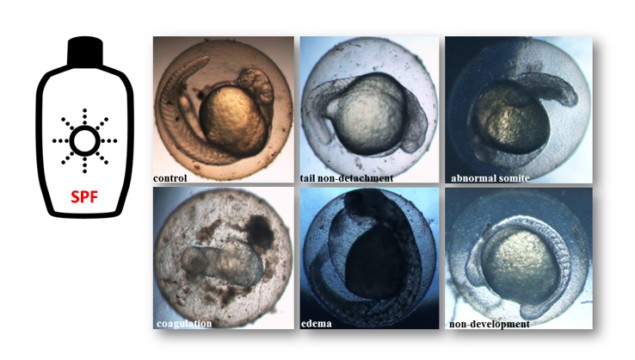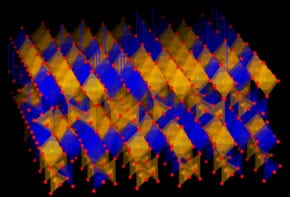
While individual sunscreen chemicals do not pose much of a danger to wildlife, researchers in China have found that combinations of these chemicals might have more of an impact. The scientists have studied the effects of multiple organic UV filters on successive generations of zebrafish, revealing that toxic effects appear after 47 days of exposure to highly elevated levels of the chemicals. Although the amount of chemicals they tested is much higher than what is likely to occur in reality, the team insists that further studies are needed to determine how these compounds impact living organisms and their environment.
Sunscreen helps protect us from damaging UV radiation, which can not only cause sun burn, but also skin cancer and premature skin ageing. Organic UV filters are widely used in sun creams, moisturizers and makeup, but they are also found in textiles, plastics and paints to prevent photodegradation and discolouring. As a result, significant amounts of these chemicals are now present in the environment (around 6800 ng/L in water and over 10 000 ng/L in wastewater effluent). These chemicals, which are endocrine disrupters, have also been found to bioaccumulate in animals, including fish, dolphins and birds eggs, and in humans.
Most “worse-case scenario” studies to date have concluded, however, that single UV filter compounds are not present in high enough levels to pose a risk to wildlife, be it marine or terrestrial. A team of researchers led by Kelvin Sze-Yin Leung of Hong Kong Baptist University, has now studied the effects of combinations of different UV filters to find out whether they are more harmful than individual compounds.
Nine common UV filters tested
The researchers analysed the levels of nine common UV filters in surface waters around Shenzhen, one of the world’s most rapidly developing seaside cities. The UV filters measured were benzophenone-1, BP-3, benzophenone-8, EHMC, octyl dimethyl-p-aminobenzoic acid, OC, 4-hydroxybenzophenone, 4-methylbenzylidene camphor and 3-benzylidene camphor. They found that seven of these were present on public beaches, in a nearby reservoir and, to their surprise, tap water. They then fed zebrafish – a widely studied model organism – with brine shrimp that had, in turn, fed on realistic and toxic concentrations of the UV filters (both single compounds and in mixtures).
They found that while the adult fish were not affected, their offspring showed some abnormalities in their early development, such as decreased heart rate and hatching. These abnormalities appeared after 47 days of exposure to toxic levels of the chemicals.
Leung and co-workers say that they would now like to find out which chemicals, either singly or in combination, are causing the effects they observed. “In this way, we might be able to replace the most toxic ones with those that are less so,” team member Adela Jing Li told Physics World. “Another way to mitigate their effect might be to improve wastewater treatment, by removing UV filter residues before release.”
The results from this study clearly show that UV filters are adversely affecting early life-stage zebrafish, she and her colleagues write in their paper, published in Environmental Science & Technology. “Like the canary in the coal mine, could these relatively small, simple organisms be warning of increasing, cumulative risks and dangers to larger organisms and indeed the ecosystem itself?” the researchers ask. “A comprehensive evaluation of the complex effects that these UV filters, and their mixtures, are having on aquatic environments as well as human health should be undertaken. With this knowledge, we could then take appropriate action to curtail their potentially damaging effects.”



